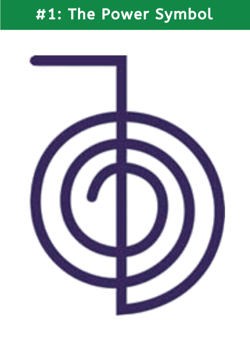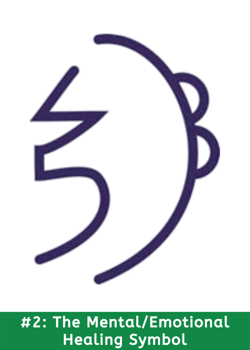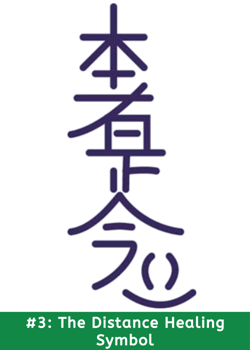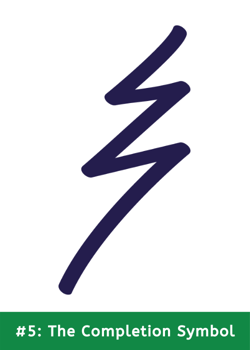Reiki symbols are an important part of the teachings in the Usui lineage and a core element in reiki training. These Sanskrit-based Japanese forms have been passed on through generations of reiki masters and reiki providers around the world in the century since Dr. Mikao Usui developed the ancient energy healing system in Japan.
These symbols were once kept secret and were only revealed to reiki providers through attunement. Today they can easily be found, but still require attunement by a reiki master to activate.
What is reiki attunement?
The practice of attunement is an important step that any reiki student must receive before providing reiki sessions, even if they have many years of experience in energy healing.
The purpose of attunement is to clear and expand the central energy channel of the reiki provider, so that universal life force energy can flow through them.
The reiki symbols do not have any inherent power in them until they are activated for each reiki provider through attunement by a reiki master.
What are reiki symbols?
It is believed that Dr. Mikao Usui received the symbols in Sanskrit, an ancient and sacred language of the Indian subcontinent known as the “mother of all languages.” It is said that these symbols were channeled to Usui as part of the reiki system during the 21 days he spent in solitude in a cave at Mount Kurama in deep meditation and prayer.
Once activated, the reiki symbols are believed to help the reiki provider focus and align with intention and purpose. They are known both by their intention and their Japanese name, which relates to its role in the energy healing modality.

How are the 5 Usui reiki symbols used in training?
Most reiki masters have received reiki certification and training in the Usui lineage, in which there are five main symbols. The first three symbols, power, harmony and distance, are given at the reiki second degree (Level 2). The second two symbols are mastery and completion and are given at the reiki third degree (Level 3).
By moving the hands over the lines of these five traditional symbols, the reiki healer can restore the harmonious flow of universal energy called ki (or qí) throughout the body, leading to physical, mental and spiritual balance. The symbols can be said aloud, drawn in the air with the fingers, visualized or traced upon the palm. They are to be used with a purpose and intention at different times during a reiki session or attunement.
The three symbols given during the level 2 attunement:
- The Power Symbol (Cho Ku Rei)
- The Mental/Emotional Healing Symbol (Sei He Ki)
- The Distance Healing Symbol (Hon Sha Ze Sho Nen)

#1: The Power Symbol (Cho Ku Rei)
This symbol means “placing all the powers of the universe here.” It represents chi, the movement of life force energy through the body, which is represented by the coil, which can be drawn in a clockwise or counter-clockwise direction depending on whether the intention is to increase or decrease power. When this symbol is activated, it is believed that the reiki provider instantaneously increases their ability to channel energy.

#2: The Mental/Emotional Healing Symbol (Sei He Ki)
This is a harmonizing symbol that provides purification, protection and balance between the mind and emotions. The symbol works on both the conscious and unconscious levels and can be used to balance the left and right hemispheres of the brain. It is known to help resolve tension in relationships, boost affirmations, let go of bad habits and ease headaches.
#3: The Distance Healing Symbol (Hon Sha Ze Sho Nen)
This symbol is used to transmit reiki energy across space and time. It can help one to reexamine and heal from past events with a more enlightened perspective, and project healing intention into the future to events that have yet to come. It is connected to the idea of ‘having no present, past or future.’ As its name implies, it can be used for distance healing, for example when it is not possible to be in the physical presence of a person, whether they are geographically near or far away.
The two symbols given during the level 3 attunement:
- The Master Symbol (Dai Ko Myo)
- The Completion Symbol (Raku)
 #4: The Master Symbol (Dai Ko Myo)
#4: The Master Symbol (Dai Ko Myo)
This is known as the most sacred of the five symbols because it has the highest frequency vibration. When activated, this symbol holds the potential of transformation, karma healing, empowerment and spiritual enlightenment, and is believed to help bring reiki providers closer to God. A key aspect of the master symbol is the concept that healing on a spiritual level automatically leads to healing at the mental and physical levels.
#5: The Completion Symbol (Raku)
This symbol is often identified as the “fire serpent” or “lightning bolt” and is used at the end of a reiki session to seal the life force energy. The grounding quality of this symbol is meant to help the body to absorb and integrate the benefits of reiki. The form is drawn in a downward motion to symbolize completion of the session. It can be used to cleanse any negative energy that the reiki master might have picked up from the recipient of a reiki healing.
The three levels of reiki
Most reiki schools divide their training into the following three levels:
The First Degree (level 1):
Focusing on the physical level, at this stage reiki students receive theory and practice of how to use reiki on themselves and as a meditation practice.
The Second Degree (level 2):
At this level students can provide reiki healing services to others. They are given access to symbols for healing across time and space, transgenerational healing, and helping souls to rest who haven’t been able to fully transition. At this point they are considered reiki providers.
The Third Degree (level 3):
The reiki provider can receive the master attunement and symbol. They can now teach and attune others in reiki, but are not required to. Level 3 is considered a “master” or “teacher” level.
How can I become a reiki master?
In reiki, it is believed that all human beings are born with the capacity to channel universal life force energy for healing themselves and others. Therefore anyone can become a reiki healer. Reiki master training requires attaining the first, second and third degrees, and also should include personalized study with another reiki master.
Beyond completion of the required courses, protocol, attunement, and intonations, the process of becoming a reiki master should include enough time and reflection to adequately integrate theory and practice for spiritual growth and maturity.
How to protect your reiki services
If you are considering providing reiki sessions as a part of your holistic health services, make sure you protect your reiki services from potential legal and financial consequences.
Although undergoing reiki training to obtain reiki certification is an important qualification for becoming a reiki provider or reiki master, in most states, certification is not enough to protect you from severe legal and financial risks. Reiki classes include important aspects such as reiki attunement, symbols, theory, and practice, but reiki certification itself does not guarantee that you can offer your services legally.
Having a solid, defendable legal basis to protect your reiki services and clients is essential. The Professional Wellness Alliance (PWA) can help protect your livelihood by giving you a defendable legal basis from which to offer your services.
Learn more about becoming a licensed reiki provider here.
.png?width=350&height=350&name=professional-wellness-alliance-logo%20(2).png)




